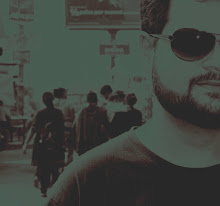Mr. Ralph Spencer, the phoenix that arose from Jimmy Valentine’s ashes – ashes left by the flame of a sudden and alterative attack of love – remained in Elmore, and prospered. He opened a shoe-store and secured a good run of trade.
A Retrieved Reformation (for me, Jimmy Valentine) – O.Henry
I was fascinated by the idea of a phoenix when I had first read Jimmy Valentine. It rises from its own ashes and is reborn anew to live again. Wish we could all do so. Or, is that that we all have a phoenix in all of us? For some one who has seen the best as well as the worst of the times, rising from his/her own ashes is not a big deal. Troubled times are but passing moments, have faith in love, it just might resurrect you!
Finally, I had the pleasure of watching The Artist. Michel Hazanavicius’ The Artist. Jean Dujardin’s The Artist. The Academy Award winner, The Artist. I must admit, I have been bestowed with friends who appreciate my love for cinema and make ways, quite genuinely of course, to help me watch shows that are otherwise pretty costly. Thank you dear(s) for making my wishes come true and thank you all who encourage me to write! Now writing on an English movie, with a French director is Herculean task for me. But as I thought of it, I recalled a day, almost a decade back, when I had actually written a piece on an English movie! I.S.C. Examination and I composed an essay on Titanic as my favorite film, and readers, it is still one of my most cherished movies ever and I vow to watch it on 3D, April 2012, at a theatre, perhaps not so near to me!
The Artist follows the old premise of films-within-a film and takes us back to the late Twenties and early Thirties Hollywood with an acclaimed silent movie star George Valentin (Jean Dujardin) and a chirpy, beguiling young female lead Peppy Miller (Bérénice Bejo) at the onset of the talkies. The film makes the literal use of the proverb ‘pride goes before a fall’ as Valentin refuses to compromise. He feels no need to ‘speak’ to draw his audience. “If that’s the future, you can have it”, he ‘says’ to the studio boss Al Zimmer (John Goodman) and the producers, who watch a test-footage on screen. Miller rises as the budding star of Hollywood with her ‘Beauty Spot’ and the ‘young’ face, as well as the ‘sound’ of the new age cinema. (I wish we could have heard her once!) You can guess it right, Miller has been an ardent follower of Valentin and as she is accidentally pictured with her favorite star, her life begins to change. A hoofer that she is, her attitude (“Miller. The name’s Peppy Miller!”) as well as her talent help her in the journey of making it big in the tinsel town. Valentin produces Tears of Love but fails miserably as the talkies survive in the ballet of the fittest. Deserted by his wife (who had been trying to ‘talk’ to her husband for a long time) and left alone with the doggie (Uggie, whose presence heightens up the EQ of the film, somewhat Chaplinesque too) and Clifton, his secretary (James Cromwell), Valentin has a tough time living only in the resonating silent memories of the past.
He puts his old reels on fire, except ‘clutching’ the one which Peppy had her first role. An excellently captured footage of the two, dancing, is a haunting image of brilliance. His terrier saves his master and as we have thought, he is sheltered at Peppy’s house who is delighted at his recovery. For a man who has lived his pride, finding all his auctioned belongings at her place is not easy. He leaves her place only to return to his burnt apartment. As he contemplates suicide, our heroine arrives and his life is saved, the second time. For those who have not yet seen the film, let Valentin say the last word!
The Artist makes every possible move effective in its use of silence. Hazanavicius does not retort to silence because the film is set in the era of silent pictures itself, but he knows that sound and fury would only mar the magic. Ludovic Bource’s music captures it all and Guillaume Schiffman’s cinematography breathes life in every frame. What would our own Bharata say, if he was alive? The film is a triumph of the Rasas, the power of abhinaya: Bhavas, Vibhavas, Anubhavas, Sthayibhavas, Vyabhicharibhavas and Satvikabhavas and again the eight Sthayibhavas namely Rati (love), Hasa (laughter), Shoka (sorrow), Krodha (anger), Utsaha (energy), Bhaya (fear), Jugupsa (disgust) and Vismaya (amazement). These are the driving forces in the film. Colours are not celebrated here, only silence is amidst the backdrop of an astounding musical score.
The scenes where Peppy slides her hand in Valentin’s coat only to caress herself, or when Valentin watches and later joins to the dance-steps of Peppy from behind the partially-raised studio backdrop, or when he finds it painful to hear himself as the talkies replace the silent pictures, make you realize how powerful silence can be. The moment Valentin confronts his shadow on the screen is terrifyingly Jungian.
Valentin, like my Valentine in the beginning, rises from his ashes. And the director safely plays with a plot that might not seem very new, but makes monochrome look sexier like never before and reminds you of what a ‘picture’ as moving as The Artist is capable of doing.
Mr. Director, what’s your next? We shall wait, “With pleasure, Sir!”

What an absolute pleasure to read't :)
ReplyDeletebeautiful read...well composed and well organised!
ReplyDelete